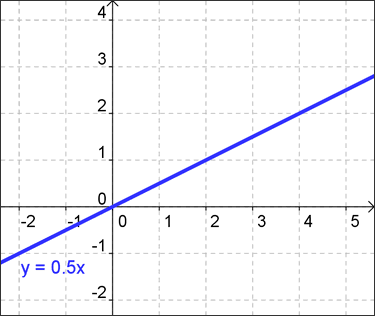

تاريخ الرياضيات

الاعداد و نظريتها

تاريخ التحليل

تار يخ الجبر

الهندسة و التبلوجي


الرياضيات في الحضارات المختلفة

العربية

اليونانية

البابلية

الصينية

المايا

المصرية

الهندية


الرياضيات المتقطعة

المنطق

اسس الرياضيات

فلسفة الرياضيات

مواضيع عامة في المنطق


الجبر

الجبر الخطي

الجبر المجرد

الجبر البولياني

مواضيع عامة في الجبر

الضبابية

نظرية المجموعات

نظرية الزمر

نظرية الحلقات والحقول

نظرية الاعداد

نظرية الفئات

حساب المتجهات

المتتاليات-المتسلسلات

المصفوفات و نظريتها

المثلثات


الهندسة

الهندسة المستوية

الهندسة غير المستوية

مواضيع عامة في الهندسة

التفاضل و التكامل


المعادلات التفاضلية و التكاملية

معادلات تفاضلية

معادلات تكاملية

مواضيع عامة في المعادلات


التحليل

التحليل العددي

التحليل العقدي

التحليل الدالي

مواضيع عامة في التحليل

التحليل الحقيقي

التبلوجيا

نظرية الالعاب

الاحتمالات و الاحصاء

نظرية التحكم

بحوث العمليات

نظرية الكم

الشفرات

الرياضيات التطبيقية

نظريات ومبرهنات


علماء الرياضيات

500AD

500-1499

1000to1499

1500to1599

1600to1649

1650to1699

1700to1749

1750to1779

1780to1799

1800to1819

1820to1829

1830to1839

1840to1849

1850to1859

1860to1864

1865to1869

1870to1874

1875to1879

1880to1884

1885to1889

1890to1894

1895to1899

1900to1904

1905to1909

1910to1914

1915to1919

1920to1924

1925to1929

1930to1939

1940to the present

علماء الرياضيات

الرياضيات في العلوم الاخرى

بحوث و اطاريح جامعية

هل تعلم

طرائق التدريس

الرياضيات العامة

نظرية البيان
Direct Variation
المؤلف:
المرجع الالكتروني للمعلوماتيه
المصدر:
www.almerja.com
الجزء والصفحة:
...
4-3-2017
2105
When two variables are related in such a way that the ratio of their values always remains the same, the two variables are said to be in direct variation.
In simpler terms, that means if A is always twice as much as B, then they directly vary. If a gallon of milk costs $2, and I buy 1 gallon, the total cost is $2. If I buy 10 gallons, the price is $20. In this example the total cost of milk and the number of gallons purchased are subject to direct variation -- the ratio of the cost to the number of gallons is always 2.
To be more "mathematical" about it, if y varies directly as x, then the graph of all points that describe this relationship is a line going through the origin (0, 0) whose slope is called the constant of the variation. That's because each of the variables is a constant multiple of the other, like in the graph shown below:

Let's review several key concepts of direct variation:
1) Expressing Direct Variation as an Equation
The equation y/x = 6 states that y "varies directly as" x since the ratio of y to x (also written y:x) never changes. The number 6 in the equation y/x = 6 is called the constant of variation. The equation y/x = 6 can also be written in the equivalent form, y = 6x. That form shows you that y is always 6 times as much as x.
Similarly, for the equation y=x/3, the constant of variation is 1/3. The equation tells us that for any x value, y will always be 1/3 as much.
2) Algebraic Interpretation of Direct Variation
For an equation of the form y = kx, multiplying x by some fixed amount also multiplies y by the SAME FIXED AMOUNT. If we double x, then we also double the corresponding y value. What does this mean? For example, since the perimeter P of a square varies directly as the length of one side of a square, we can say that P = 4s, where the number 4 represents the four sides of a square and s represents the length of one side. That equation tells us that the perimeter is always four times the length of a single side (makes sense, right?), but it also tells us that doubling the length of a side doubles the perimeter (which will still be four times larger in total).
3) Geometric Interpretation of Direct Variation
The equation y = kx is a special case of linear equation (y=mx+b) where the y-intercept equals 0. (Note: the equation y = mx + b is the slope-intercept form where m is the slope and b is the y-intercept). Anyway, a straight line through the origin (0,0) always represents a direct variation between y and x. The slope of this line is the constant of variation. In other words, in the equation y = mx + b, m is the constant of variation.
Example A:
If y varies directly as x, and y = 8 when x = 12, find k and write an equation that expresses this variation.
Plan of Attack:
Plug the given values into the equation y = kx.
Solve for k.
Then replace k with its value in the equation y = kx.
Step-by-Step:
Start with our standard equation: y = kx
Insert our known values: 8 = k*12
Divide both sides by 12 to find k: 8/12 = k
2/3 = k
Next: Go back to y = kx and replace k with 2/3.
Result:
y = (2/3)x
Example B:
If y varies directly as x, and y = 24 when x = 16, find y when x = 12.
Plan of Attack:
When two quantities vary directly, their ratio is always the same. We'll create two ratios, set them equal to each other, and then solve for the missing quantity.
Step-by-Step:
The given numbers form one ratio expressed as y/x: (24/16)
To find y when x=12 we setup another ratio: (y/12)
Solve:
By definition, both ratios are equal: (24/16) = (y/12)
Multiply each side by 12 to solve for y: (1.5)*12=y
Result:
18 = y
 الاكثر قراءة في مواضيع عامة في الجبر
الاكثر قراءة في مواضيع عامة في الجبر
 اخر الاخبار
اخر الاخبار
اخبار العتبة العباسية المقدسة

الآخبار الصحية















 "المهمة".. إصدار قصصي يوثّق القصص الفائزة في مسابقة فتوى الدفاع المقدسة للقصة القصيرة
"المهمة".. إصدار قصصي يوثّق القصص الفائزة في مسابقة فتوى الدفاع المقدسة للقصة القصيرة (نوافذ).. إصدار أدبي يوثق القصص الفائزة في مسابقة الإمام العسكري (عليه السلام)
(نوافذ).. إصدار أدبي يوثق القصص الفائزة في مسابقة الإمام العسكري (عليه السلام) قسم الشؤون الفكرية يصدر مجموعة قصصية بعنوان (قلوب بلا مأوى)
قسم الشؤون الفكرية يصدر مجموعة قصصية بعنوان (قلوب بلا مأوى)


















